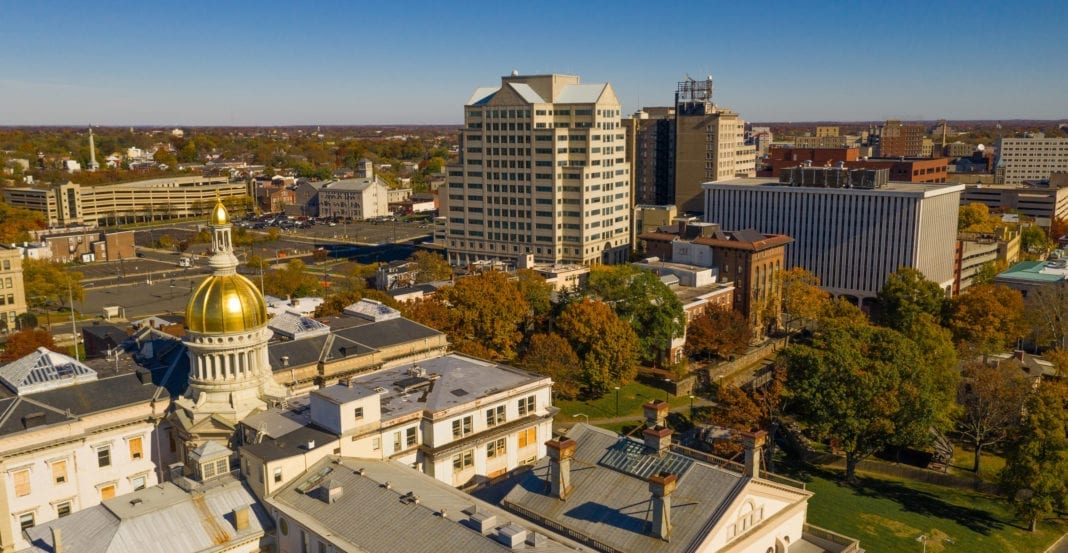The Capital City Redevelopment Corporation (CCRC) Board announced yesterday, June 14, that it has approved initiating the public adoption process for the draft update to its Renaissance Plan. The Renaissance Plan was first adopted in 1989 to fuel economic development within Trenton’s Capital District and to make the area a more attractive place to live, work, play, and conduct business. The update is designed to reflect changes in the social, economic, and natural environment over the last 30 years and to provide a guide for the Capital District into the future.
A copy of the draft plan is currently available at https://www.njeda.com/ccrc-renaissance-plan/. CCRC plans to hold public hearings in August to solicit input on the draft update, followed by a 30-day public comment period. CCRC’s website will be updated soon with specific dates and times of the hearings and comment period. The draft plan site at https://www.njeda.com/ccrc-renaissance-plan/ includes a public comment form for anyone interested in commenting on the draft plan.
CCRC was statutorily created in 1988 to assist with the planning, coordination, and promotion of development within the Capital District, which consists of those portions of the City of Trenton that serve as its commercial center, and in which public buildings and historic sites are located.
CCRC’s Renaissance Plan guides public and private investment decisions within the district through goals, policies, and specific recommendations. In 2019, the CCRC Board hired Newark-based Topology, a real estate and planning firm, to oversee and assist with updating the Renaissance Plan in coordination with the City of Trenton’s recent update to its Master Plan, known as Trenton 250, as well as other relevant plans for areas within the CCRC Boundary.
The Renaissance Plan seeks to preserve the historical, cultural, architectural, and environmental assets of the Capital District while engendering significant new development opportunities. Recommendations proposed in the Renaissance Plan’s draft update modernize that effort.
“The City of Trenton has all the elements needed to become a premier economic and cultural destination, including access to government and private sector agencies, higher education institutions, and businesses of all sizes, entertainment venues, and a network of multi-purpose trails,” said CCRC Chairman Peter A. Inverso. “I want to thank the many individuals and organizations that contributed to drafting the update to the Renaissance Plan. I am especially grateful for the very close collaboration with the City throughout the process. The public input that we expect to receive on the plan will help us fine tune this critical document so that it clearly lays the foundation and parameters necessary to attract, guide and strengthen public and private investment and civic and social activities in the Capital District.”
The draft update to the Renaissance Plan identifies seven key objectives: making downtown Trenton more attractive, inviting, and safe; improving access in and around downtown; restoring traditional linkages to waterways; promoting a diversity of uses; improving the circulation and parking network downtown; expanding and enhancing the historical value of Trenton; and enhancing the social environment. It also includes individual recommendations and priority actions to achieve these goals within each of the six planning areas within Trenton: The Canal, the State Capital, the Central Business District, Mill Hill, the Riverfront, and the Transit Center. Additionally, the Renaissance Plan provides clear and predictable guidance for land use and development that considers, and is aligned with, both the long-term and aspirational goals of both the State as well as the City of Trenton, and addresses existing transportation systems and ways to manage and meet transportation demands.
“Once a booming industrial hub, Trenton is well on its way to returning to its status as a bustling center of commercial activity,” said Trenton Mayor W. Reed Gusciora. “At the core of that effort is the Renaissance Plan, which will help map a course for the Capital District’s aesthetic and economic future for years to come. We are grateful to our partners in this planning process at the state and local levels for the time and resources they devoted to bringing this plan forward for review and public input. Once adopted, this plan will serve as an important instrument to dovetail with the City’s local master plan for future land use and redevelopment within the Capital District, the first update to this plan in more than 30 years.”
The Renaissance Plan also supports efforts and seeks opportunities to create a long-term capital plan for state-owned properties that forecasts demand for physical space and consolidates and properly manages parking. It also encourages integration of state resources with the existing downtown community and focuses on redevelopment opportunities.
“This update to the Renaissance Plan complements Trenton’s 250 master plan and helps further shape and refine development and priorities within the CCRC district,” said Greater Trenton CEO George Sowa, who also serves on the CCRC Board and Executive Committee. “We encourage and appreciate input from all Trentonians into this important planning document to ensure it reflects everyone’s desires for the future of Trenton.”
The draft update to the Renaissance Plan builds on Governor Phil Murphy’s Executive Order 40, which created the New Jersey State Capital Partnership to revitalize the Capital City. The New Jersey Department of the Treasury helps spearhead the Partnership for the state, which is the largest landowner and employer in Trenton.
“We are proud to work with our partners through the NJ State Capital City Partnership established by the Governor to help fuel the resurgence of the Capital City,” said State Treasurer Elizabeth Maher Muoio. “We encourage the community to review the plan and provide comments, as this plan will help guide public and private development of the downtown – an area which is important to the community, the city, and the State as a whole.”





